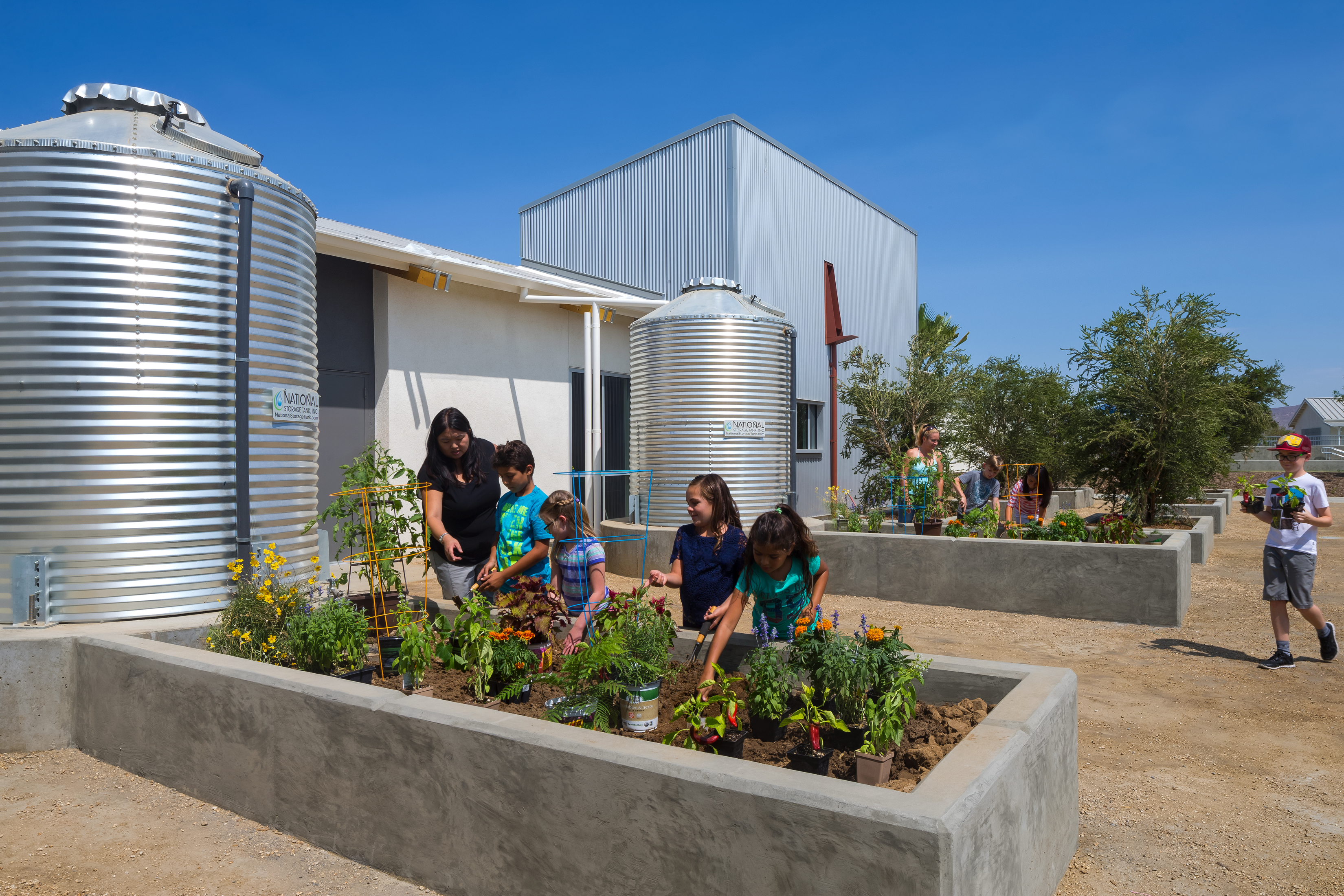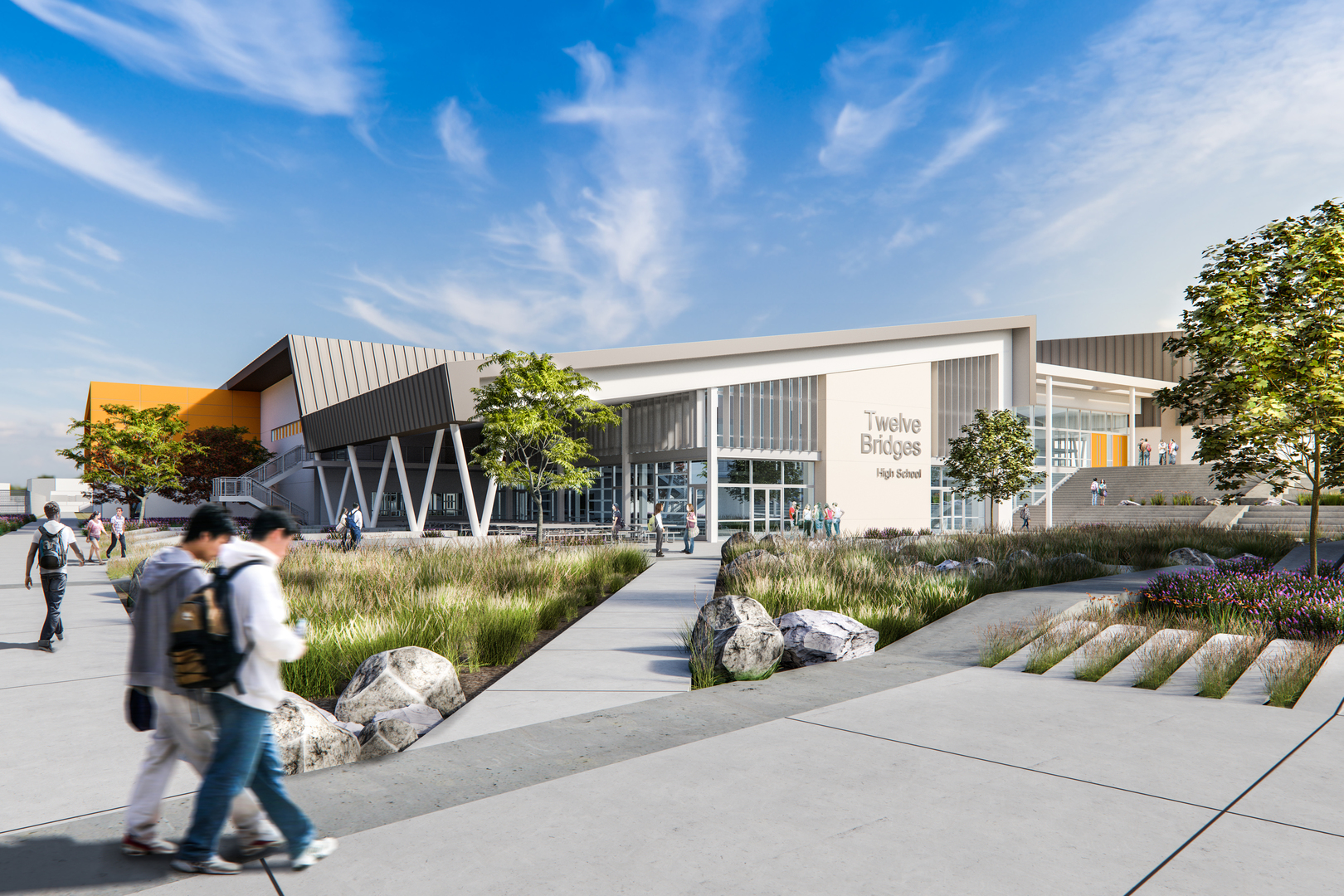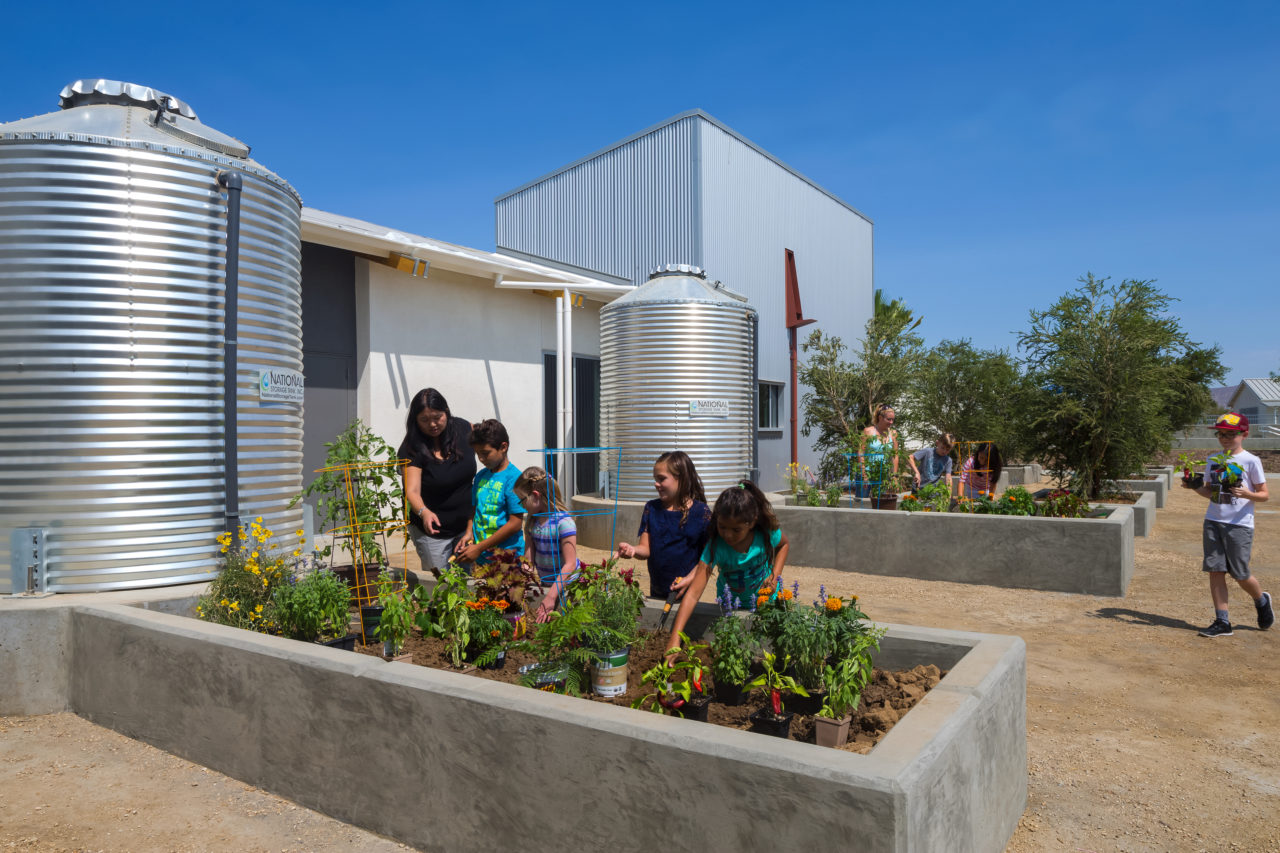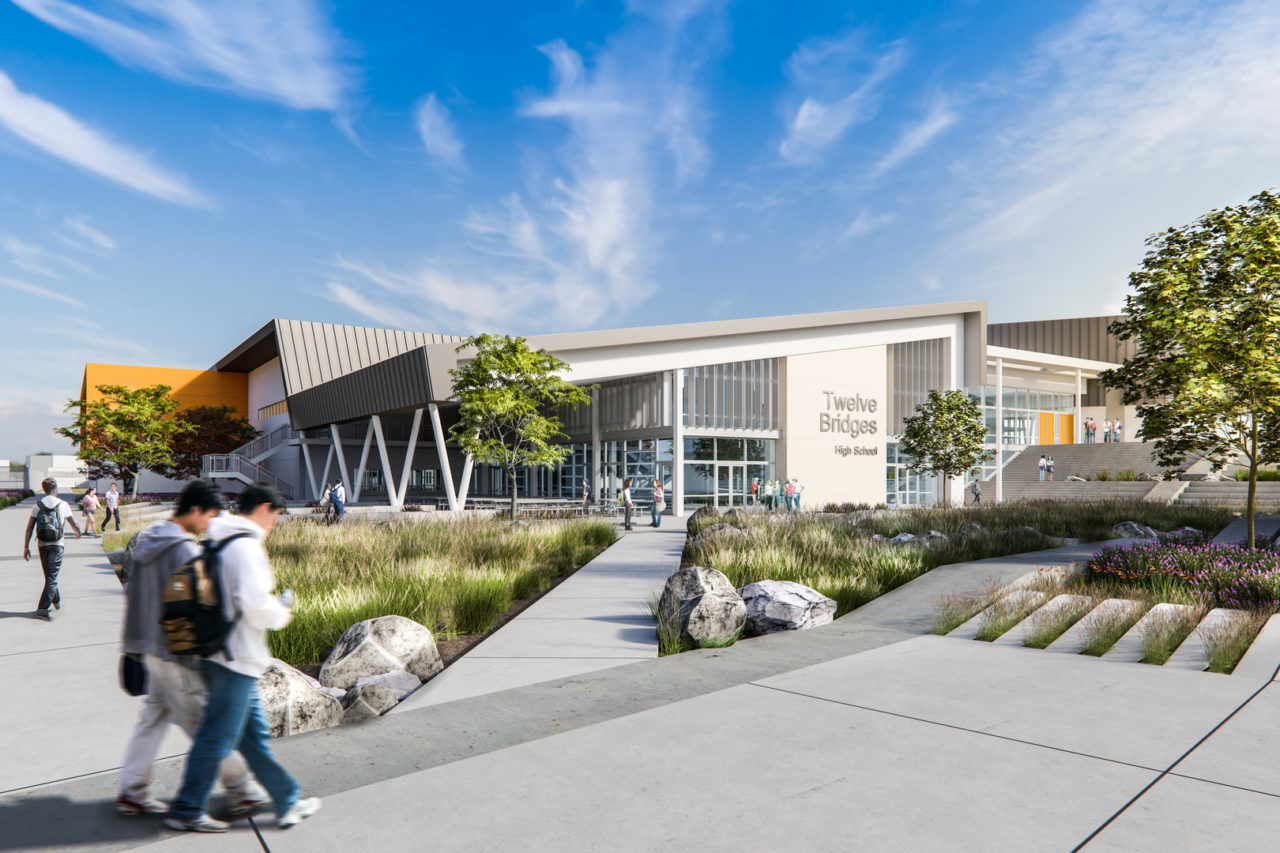It’s rare to have a project that doesn’t also have a landscape component, whether it be a large site design or simply some planters and hardscape in a dense city center. It would be easy to think of that as an afterthought, or as simply the job of the landscape architect, but at HMC Architects, we encourage our designers to think outside the building and understand that they are creating cohesive environments, which includes the landscape design. Each component is a purposeful design extension of the other, and shouldn’t be pushed off to the end of the project, but rather considered as an important design variable from the first planning stages of a project.
Using Landscape and Architecture Design To Support Each Other
A successful intersection of landscape design and architectural design requires each component to support the other. Besides just aesthetics, some of the ways landscape design can support the architecture are:
- Extending interior space to the exterior, which increases the use of both, simply by being thoughtful about the adjacency.
- Using design tactics to control light or heat gain on interior spaces such as:
- Designing a more reflective surface to bounce indirect light into a space, or using a softer, less reflective surface (such as plant material) to reduce longwave radiation from concrete or asphalt
- Strategically designing a concrete surface to act as a thermal mass in certain climates.
- Using both landscape and architecture as a teaching tool for education facilities. Some ways of doing this are:
- Basic gardening education with rooftop gardens.
- Habitat preservation and creation, focusing on local flora and fauna.
- Water quality or treatment, such as bioswales or retention ponds.
- Rainwater control, such as collecting roof runoff and using it for irrigation purposes, or even for toilets, where allowed.
By paying attention to the environment and users, as well as considering the local terrain, flora, and fauna can help designers make informed, intelligent, and environmentally respectful design decisions that can help create natural and timeless building environments.
 Integrating Landscape and Architecture Design
Integrating Landscape and Architecture Design
We believe that one of the most important building types to really make an impact on occupants is in educational facilities. The children we are educating today will be facing far greater climate and environmental challenges than we do now. Maintaining strong environmental and landscape connections to their education will help make a positive impact on them. By creating a built environment that’s a positive example of responsible environmental design, we’re doing our part to pass these important considerations along to the next generation.
At the Rancho Campana High School in Camarillo, California, we clustered classrooms around common greenspaces, allowing teachers to open up an entire classroom wall, which blurred the lines between indoor and outdoor educational space. The Clearwater Elementary School in Perris, California had an opportunity to use grant funds to really highlight stormwater management techniques, managing to create both a functional site design, as well as a teaching opportunity for the students of the school.
 Technology’s Impact on Landscape and Architecture Design
Technology’s Impact on Landscape and Architecture Design
We believe that the relationship between landscape and architecture design will be shifting with the advent of new technologies such as virtual reality (VR) and digital imaging. As these technologies become more accessible and interoperable, the coordination between design disciplines is clearer. It enables designers to work in a 3-dimensional environment, rather than on the traditional flat drawings.
In addition to the design benefits, these technologies allow us to present ideas to clients in an easier-to-understand fashion. By “walking through” a design using VR, everyone involved can better understand the scale of all components. This allows for all parties to sign off at each stage with a clearer picture of the final product, creating a better opportunity for a successful project.
There are many opportunities for landscape and architecture design to intersect. By shifting one’s mentality to make it an early consideration, as well as inviting landscape designers to stay in the loop with the building design, architects ensure that the client is getting a cohesive final product. Not only will the project be aesthetically pleasing, but it also can be a powerful tool for occupant wellness, and future generations to come.



